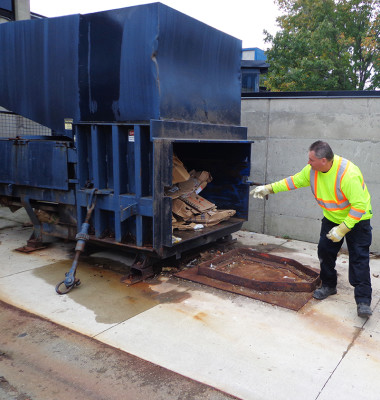STORY AND PHOTOS BY NAT GILPO
Sheridan College is investing $30.6 million over the next seven years to “re-envision its energy future” and launch a series of energy-saving programs it is calling Mission Zero.
The project, unveiled in August, introduces Sheridan’s Integrated Energy and Climate Master Plan, which aims to cut the college’s energy and carbon emissions in half by 2030.
“We want a stretch goal, but not an impossible one,” said Herb Sinnock, Sheridan’s manager of sustainable energy systems.
“We knew the best way to predict the future is to invent it,” Sinnock said in an interview.
“That philosophy is really pervasive. And we knew we needed to invent our own future in what sustainability in an institute like Sheridan would look like.”
One idea proposed by the master plan involves managing electricity use across campuses, where only occupied rooms use energy for lighting and ventilation. Fulfilling that task would reduce the college’s emissions by 30 to 40 per cent, Sinnock estimated.
Another idea involves reviewing technology in all campuses and replacing outdated systems with efficient alternatives.
A more immediate plan is Zero Waste Sheridan, which will use intense recycling programs to almost eliminate garbage and waste by 2020. The college’s new student Pay for Print program has been developed as part of the mission to cut paper waste, according to Sheridan’s Information Technology office.

Sheridan student Lois Stevens was pleased to hear about Mission Zero and its focus on the environment.
“I think it’s a good idea. It saves the environment and what we students have in the school,” said Stevens, an Early Child Education student.
Stevens hopes more focus on water conservation in the college will result from the project as well. “We have the water bottle refills and I think there should be more of those. Maybe the college can provide more efficient washrooms so that they won’t use as much water as well.”
Mission Zero is also working to apply the creative minds of Sheridan students and staff to change the college’s attitude toward improving the environment.
“Sheridan is doing something transformative, not only in terms of what’s happening in this institution, but that we’re building an energy culture by engaging everybody,” said Sinnock.
“We’re doing something that sets Sheridan as a role model that essentially shows other institutions and organizations in how you strategically plan and implement energy.”
Additional details about the project can be found in a media release issued by Sheridan administration on the college webpage.
